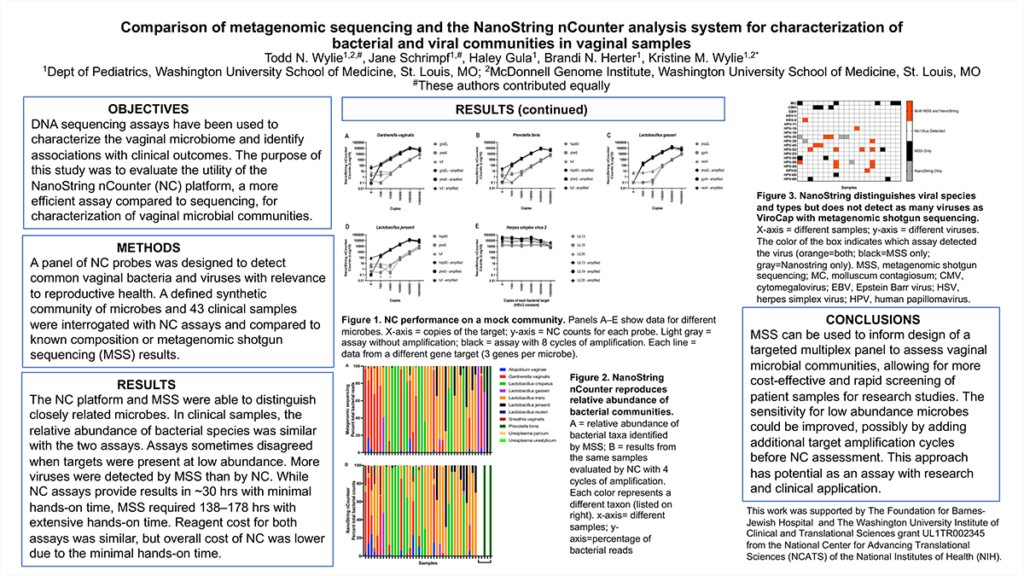Introduction: DNA sequencing assays have been used to characterize the vaginal microbiome and identify associations with reproductive outcomes. These assays are useful but can be prohibitively expensive and time consuming. The purpose of this study was to demonstrate the utility of the NanoString nCounter platform, a more efficient assay compared to sequencing, for characterization of the vaginal microbiome and virome.
Methods: A panel of NanoString nCounter targets was designed to detect common vaginal bacteria and viruses with relevance to reproductive health. A defined synthetic community of microbes and 43 clinical samples were interrogated NanoString nCounter assays and compared to known values or metagenomic sequencing results.
Results: The NanoString nCounter platform consistently detected ~100 copies of each target, but did not consistently detect 10 copies. Results were reproducible. The nCounter probes were able to distinguish closely related microbes, including Lactobacillus species. In clinical samples, the relative abundance of bacterial species and presence of viruses determined by metagenomic sequencing were largely reproduced by the nCounter. There was occasional disagreement when bacteria or viruses were present at low copy numbers. Overall, nCounter and sequencing both captured critical elements of the microbial communities. However, nCounter assays provide results in about 30 hours with minimal hands-on time, and the nucleic acid sequencing assays used for microbiome/virome analysis require at least 138-178 hours with extensive hands-on time. Reagent cost for the two assays was similar, but overall the cost of nCounter was lower due to the minimal requirement for hands-on personnel time. We are continuing to expand and improve the nCounter assay.
Impact: DNA sequencing assays can be used to inform design of a targeted multiplex panel to assess the vaginal microbiome and virome, allowing for more cost-effective and rapid screening of patient samples for research studies. This assay can capture critical features of the vaginal microbiome that are associated with reproductive health. This approach has potential as a future clinical assay.
Organization – Washington University in St. Louis
Wylie KM, Schrimpf J, Gula H, Wylie TN
